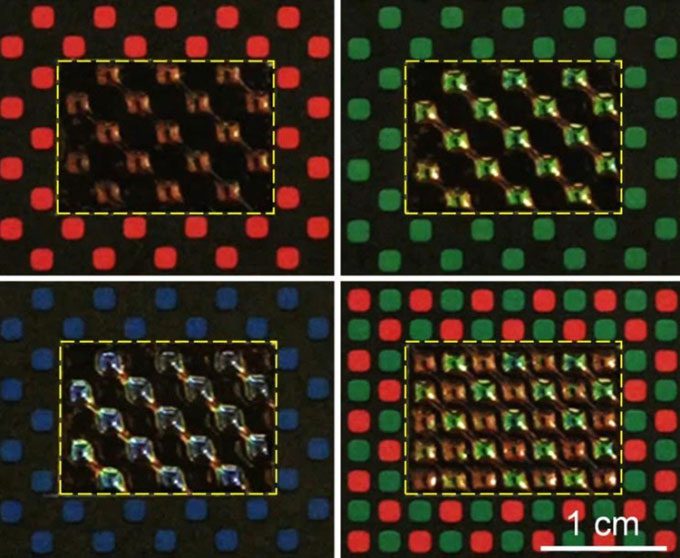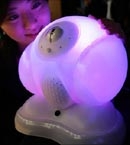Artificial cells inspired by octopuses can change color and patterns to match their surroundings, providing effective camouflage.
A team of scientists at the University of Pennsylvania has developed an artificial version of the cells that allow octopuses and cuttlefish to change their color and patterns according to their environment, enabling them to blend in at a moment’s notice, Independent reported on February 21.
They believe this could lead to new camouflage applications in fields such as robotics, architecture, cryptography, and optics. The new research was published in the journal Nature Materials.

Each artificial pigment cell operates like a pixel on a screen to match the patterns and colors of the surroundings. (Photo: University of Pennsylvania)
Chromatophores are specialized cells in cuttlefish and octopuses that can expand or contract internal reflective plates in response to external stimuli, allowing these mollusks to camouflage themselves and convey signals of anger or readiness to mate.
In the new study, the research team used thin, flexible membranes made from a polymer network of liquid crystals to create artificial chromatophores that can change color instantly from near-infrared to visible and ultraviolet light on demand. These membranes are coated over small holes arranged in a grid, each hole can be inflated to a certain pressure. When the hole is inflated, the membrane stretches, reducing thickness and changing color.
Previously, color-changing materials using similar mechanisms required a deformation of 75% to switch from red to blue. However, the new membrane only requires pressure equivalent to a light touch to change to any color in the visible light spectrum.
Older materials with this mechanism could not be used for fixed-dimensional objects like screens or windows. In contrast, the new artificial chromatophores only need to deform under 20%, and the research team believes they could be arranged like pixels in an LCD screen.
“When observing how some animals evolved structural colors, we realized they had elastic cells that operate like pixels on a screen, and we could take a similar approach,” said Shu Yang, the lead author of the study.
The new technology is based on a phenomenon that makes butterfly wings and peacock feathers more iridescent than what pigments or dyes can achieve. This structural color phenomenon occurs when light interacts with tiny features on the surface, which the research team replicated in their study using liquid crystals.
When a hole in the membrane is inflated, the membrane expands. This reduces the density of liquid crystals in the membrane and alters the wavelength of light reflected to the viewer. By accurately recording the pressure needed to make each artificial chromatophore change to the desired color, the experts can program them to function like pixels on a screen.
“I wanted to create red, green, and blue simultaneously, so I connected holes of different widths to the same air channel. This means that even under the same pressure, the deformation and color of the pixels will differ, simplifying the overall complexity of the device,” co-author Kim Se-Um explained. In the study, the prototype was able to create a checkerboard pattern matching the color and pattern of the surrounding surface.




















































